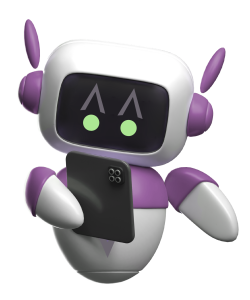In your role as an HR expert, you’re perpetually on the lookout for methods to supercharge your operations and crank up the revenue dial. You can automate the drudgery and unlock the full potential of artificial intelligence and insights. With intelligent automation, you’ll be free to focus on high-impact decisions that drive real results.
Reshaping the Future of Work with Intelligent Automation AI
Operations are the backbone of any company, but these critical tasks can often be repetitive and time-consuming. Traditionally, businesses have tried automating operations with Robotic Process Automation (RPA) which manage repetitive tasks, and have no machine learning capabilities, natural language processing, nor generative AI under the hood.
However, robotic process automation has limitations. It struggles with processes that change or aren’t well-defined. Advancements from companies like Anthropic now offer true automation through artificial intelligence. Imagine the ability to delegate your most mundane tasks to a superstar team member that never sleeps, complains, or makes mistakes. That’s what you get with advanced agents that pick up on objectives, act on them promptly, and respond dynamically to changing circumstances – letting human experts tackle the stuff that truly matters. Imagine compressing developmental cycles, boosting team collaboration, and taking abstract ideas from the whiteboard to the market shelf. That’s what this digital transformation can deliver to forward-thinking organizations.
From RPA to Intelligent Automation Artificial Intelligence: A New Era of Efficiency
Consider tasks like data entry or document extraction. These crucial elements cry out for automation, yet their toolkits are woefully incomplete. RPA emerged to handle these tasks by mimicking human actions like clicks and keystrokes.
Where financial institutions once struggled with the drudgery of invoice and document processing, RPA arrives as a welcome hero, saving time and boosting productivity. What seems to be the sticking point? These “bots” only function with rigid workflows. Generative Artificial Intelligence and large language models (LLMs) enable more comprehensive intelligent automation. Dynamic processes don’t faze this type of automation – it’s constantly adapting and learning. That’s the power of large language models (LLMs) and machine learning.
Unlike RPA, intelligent automation systems driven by LLMs handle the ever-changing realities of most operational roles. Instead of copying clicks, intelligent automation uses AI agents. These are prompted with a goal and given tools to achieve it. As changing circumstances arise, Artificial Intelligence automation hurdles are speedily addressed, resulting in quicker implementation, reduced expenses, and an increased competitive advantage. This is particularly true as more white collar roles and complex tasks are assigned to platforms with intelligent automation AI.
Impact of Intelligent Automation AI on Profitability
Two key reasons drive excitement for intelligent automation AI and the associated automation benefits. First, the market size is substantial. Artificial Intelligence can now automate manual tasks that were previously impossible with older software, well beyond process automation that automates repetitive tasks.
This process automation platform impacts manual labor covering more than 8 million jobs, according to the Bureau of Labor Statistics. This sprawling market, worth a whopping $250 billion, is heavily influenced by it. Automating customer service, for example, reduces the need for extensive call centers and elevates the customer experience. Other businesses facing similar challenges have found innovative solutions to stay ahead.
Entering the market, entrepreneurs can now seize the openings presented by intelligent automation solutions. Many operational roles lack dedicated automation software, or are not adequately supported through robotic process automation. Businesses developing verticalized intelligent automation applications encounter fewer obstacles compared to developing enterprise solutions in fields with established digital processes. Think of digital workers as the ultimate platform upgrade – they beef up automation, accelerate workflows, and bring new levels of precision to the table.
The Two Main Focuses for Intelligent Automation
The market opportunity centers on horizontal AI enablers, performing one function across different industries. Another prong of this strategy is automation that grows upwards. Crafting industry-specific workflows from the ground up allows us to zero in on the nuances that matter most.
Horizontal AI enablers address common challenges across various sectors. Vertical AI solves specific needs previously impossible with standard RPA software. Smart startup founders prioritizing vertical solutions tend to zone in on a single crucial process that sets their venture apart.
For instance, Tennr uses LLMs to automate healthcare referrals by reading faxes and PDFs. Imagine having all patient information at your fingertips, freely accessible and easily verifiable – that’s what this system delivers. Day-to-day tasks like order processing and shipment monitoring are efficiently handled by AI, allowing truck brokers to expertly coordinate logistics. Load status updates are a breeze with Happyrobot’s innovative AI-powered voice assistants on the job. And when it comes to those pesky unstructured email inboxes, Vooma efficiently automates price quotes and order processing, streamlining business operations in the process.
Workforce Augmentation Strategies for Intelligent Automation AI
Intelligent automation AI goes beyond simple task automation. Routine tasks out of the way, people can refocus on high-leverage activities that ignite creativity, wisdom, and bold, forward-thinking moves. When you augment your workforce, you’re not just adding resources – you’re supercharging your team’s capabilities, so they can take on more and achieve better results.
As automationtakes hold, your organization needs to stay one step ahead with a deliberate strategy. Imagine your business sailing effortlessly to the top, leaving rival companies in its wake – this extra oomph gives you the winning ticket to corner the market.
FAQs about intelligent automation AI
What is intelligent automation using AI?
Automating tasks is one thing, but what about entire business processes? Intelligent automation makes it possible by uniting RPA with the cognitive muscle of machine learning and natural language processing, ushering in a new era of efficiency. It breaks free from simple imitation, dynamically informing automated workflows with intelligent decision-making and problem-solving powers. Character recognition is an example of this enhanced automation.
What is AI automated intelligence?
“AI automated intelligence” seems redundant, emphasizing AI’s role in automated decision-making. Business process rules give AI the playbook it needs to successfully automate tasks. The latest intelligent automation breakthrough rests on two pillars: boundless datasets and turbo-charged decision engines that skillfully tackle workflows previously thought un automatable.
Handing over tedious tasks to automation delivers a twofer: increased efficiency and a corresponding jump in returns.
If you’re like most people, you’ve heard the terms AI and intelligent automation thrown around, but what exactly sets them apart?
AI, focusing on replicating human-like cognitive function (learning and reasoning), is a core element of intelligent automation. Speech recognition becomes a seamless affair as this technology masterfully imitates human behavior.
Intelligent automation, encompassing AI, is broader. What’s the magic ingredient that turbocharges a company’s performance? Smart technology, integrated with care. It’s all about the numbers – and when data’s calling the shots, human interference is minimized, and efficiency soars.
By handing off more mundane tasks, human talent can concentrate on making a real impact – think pumping up brand market share and revenue.
Can you spot the signs of intelligent automation in the following scenarios?
Picture this: an eclectic mix of fields, from manufacturing to healthcare, all pulsing with the rhythm of AI-driven automation. Think of all the hours spent sifting through PDFs, manually entering data into healthcare systems. Automation revolutionizes referral management by doing that job faster and more accurately, leaving humans to focus on high-touch tasks. Countless hours are reclaimed when automation software takes care of tedious chores.
With AI-driven voice assistants on their side, trucking brokers can turbocharge their operations, slash inefficiencies, and rake in bigger profits – all by effortlessly processing orders and checking load statuses. Human workers get a helping hand from this software robot in their daily routine.
Here’s a final thought to leave you with: remember the takeaways from our conversation.
Intelligent automation steers your internal machinery towards maximum efficiency. Slashing costs and turbocharging productivity are just two major perks of this solution. Companies strategically implementing workforce augmentation maximize output and efficiency. If implemented poorly, a system can trigger a chain reaction of layoffs and plummeting team spirit.
Businesses that methodically prepare for the future can effectively utilize intelligent automation and AI to streamline operations and optimize results. Where do you need a boost? Whether it’s marketing muscle, operational oversight, or tactical muscle for scaling up, this solution gets all areas of your business firing on all cylinders. Profit margins take a healthy leap, reaching all-time highs.






